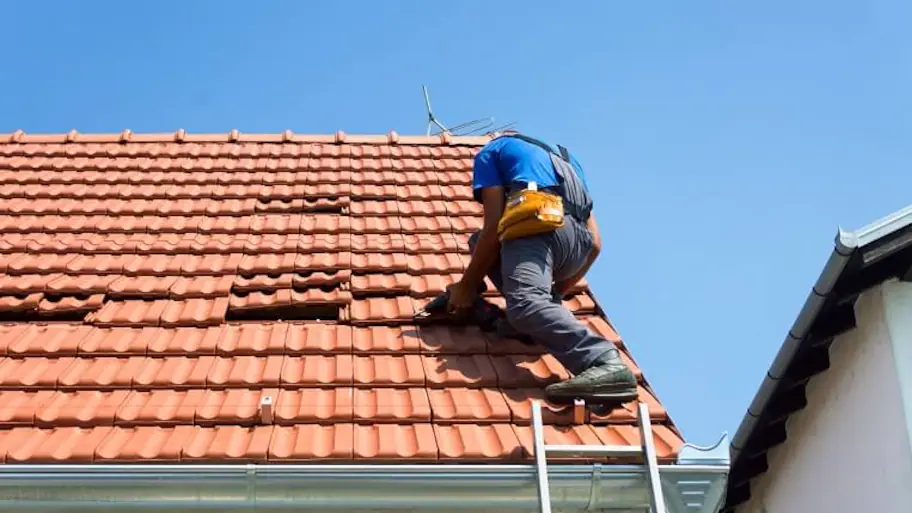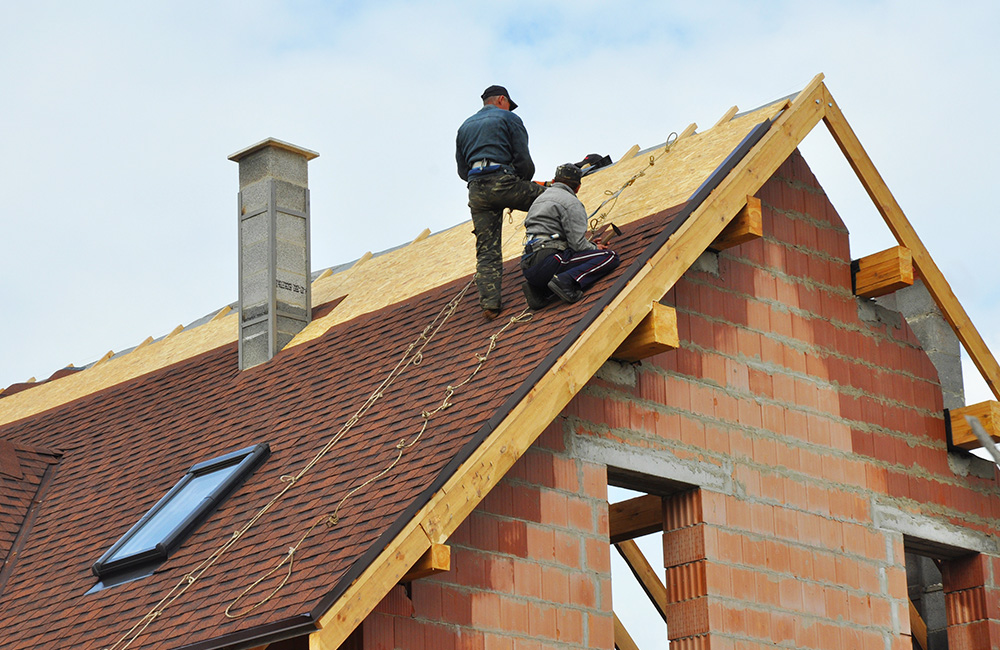Checking Out the Various Sorts Of Roofing Systems: Which One Is Ideal for Your Home?
When thinking about the myriad sorts of roofs readily available, it is essential to assess exactly how each option aligns with your home's unique demands, including environment problems, aesthetic choices, and structural functionality. From the classic gable roof covering that successfully channels rainwater to the modern-day flat roof offering metropolitan flexibility, each style offers distinct benefits and difficulties. Additionally, the choice may dramatically impact long-lasting upkeep and power effectiveness. As you ponder the ideal suitable for your residence, it is essential to evaluate these aspects thoroughly, particularly as some choices may shock you with their possible advantages.
Saddleback Roof
Saddleback roofs, identified by their triangular shape and sloping sides, are a prominent selection among home owners seeking both aesthetic appeal and performance. This roof covering style properly permits effective water runoff, minimizing the risk of water merging and succeeding damage. In addition, the high inclines create enough attic area, which can be utilized for storage or perhaps exchanged living areas.
Among the primary benefits of saddleback roofs is their capability to withstand rough weather. The layout helps in minimizing wind resistance, making them specifically appropriate for locations prone to tornados. In addition, gable roof coverings can be built using a variety of materials, consisting of shingles, ceramic tiles, and steel, offering house owners with versatility in style and spending plan.
From a building perspective, saddleback roofs can improve the visual appeal of a home, supplying a classic and traditional appearance. They can complement various architectural styles, from conventional to modern-day styles. Nonetheless, it is important to consider prospective downsides, such as the vulnerability to snow accumulation in chillier climates. Overall, gable roofs stay a favored option as a result of their equilibrium of functionality and design, interesting a vast array of homeowners.
Flat Roofs
While usually forgotten in favor of even more typical roofing styles, level roofings use one-of-a-kind advantages that accommodate details building needs and modern style choices. These roof coverings are defined by their marginal pitch, enabling for efficient use space, particularly in metropolitan environments where taking full advantage of square video is vital.
One significant benefit of flat roofings is their versatility. They can be used as additional living rooms, such as rooftop yards, patio areas, or solar panel setups, boosting the capability of a home. Additionally, flat roofs are usually much easier and more secure to browse during maintenance, facilitating repair work and evaluations without the challenges presented by high slopes.
Level roofing systems can additionally be more cost-effective in terms of products and installation. With a less complex style, they commonly require fewer resources, translating into reduced labor expenses. Nonetheless, it's essential to consider water drainage and waterproofing, as level roofings can be susceptible to merging water otherwise adequately designed.

Hip Roofings
Hip roofs stand out for their classy design and architectural honesty, making them a popular choice amongst house owners. Characterized by inclines on all 4 sides, hip roofing systems give a well-balanced visual that enhances numerous architectural styles - roof repair oahu. The symmetrical nature of these roofings aids to disperse weight uniformly, enhancing stability and sturdiness
One of the vital benefits of hip roofings is their ability to hold up against rough weather conditions. The sloped surfaces assist in efficient water drainage and snow drainage, minimizing the danger of leakages and architectural damage. In addition, the style decreases wind resistance, Find Out More making hip roofing systems less prone to wind uplift compared to various other roof covering types.


Lost Roofing Systems
Shed roofing systems, as opposed to the intricacy of hip roofing systems, offer a minimal and streamlined design that allures to modern-day aesthetic appeals. Identified resource by a single sloping surface, shed roofs are commonly used in contemporary style, garden sheds, and other useful structures. This simplicity not only enhances visual allure yet also permits efficient water overflow, making them suitable for different climates.
Among the key benefits of shed roofs is their cost-effectiveness. With fewer products required and a straightforward installment procedure, house owners can conserve both money and time. The design also permits the unification of huge windows or skylights, promoting natural light and creating sizable insides.
Nonetheless, it is necessary to take into consideration the potential drawbacks, including restricted insulation options and the need for careful design to avoid extreme warmth build-up. Furthermore, lost roofing systems may not blend flawlessly with traditional design, which can be a concern for some property owners.
Inevitably, lost roofings present a useful and stylish roofing solution for those seeking modernity and performance. When picking a roofing type, evaluating individual practical needs and visual choices will certainly guide home owners to the ideal selection for their unique demands.
Mansard Roof Coverings
Mansard roofs, characterized by their distinctive four-sided layout, are a hallmark of French style that incorporates beauty with performance. This architectural style includes two inclines on each side, with the reduced incline being steeper than the top one. The one-of-a-kind setup allows for added space in the upper levels, making it an ideal option for home owners seeking to make the most of useful location without broadening the building's footprint.
One of the considerable advantages of a mansard roof is its versatility. It can be adjusted to various architectural designs, from conventional to modern-day, boosting the aesthetic appeal of any home. Furthermore, the enough space produced under the roofing system can conveniently fit dormer home windows, which enable natural light and air flow, further enhancing the comfort of the living location.
However, prospective property owners should take into consideration the upkeep demands associated with mansard roofings. Installation costs might be greater contrasted to less complex roof layouts due to the complexity of building.
Conclusion
To conclude, the selection of a suitable roofing type depends upon individual requirements, climate considerations, and aesthetic choices. Each roofing style provides special benefits, such as the performance of gable roofs, the modern appeal of shed roofing systems, and the security of his explanation hip roof coverings. Moreover, level roof coverings offer usefulness for city environments, while mansard roofings offer extra space despite higher setup expenses. Inevitably, a complete assessment of these aspects will certainly assist house owners in making a notified decision.
From the classic gable roofing that efficiently networks rainwater to the modern-day level roof offering urban flexibility, each design provides distinctive benefits and difficulties (roof repair oahu). Additionally, the layout reduces wind resistance, making hip roofings much less vulnerable to wind uplift contrasted to various other roofing types
Shed roofing systems, in contrast to the complexity of hip roofs, provide a streamlined and minimal design that appeals to modern aesthetics. Each roof design provides one-of-a-kind advantages, such as the efficiency of gable roof coverings, the modern allure of shed roofs, and the stability of hip roofing systems. Level roofings use practicality for urban environments, while mansard roofings supply additional living room despite greater setup expenses.